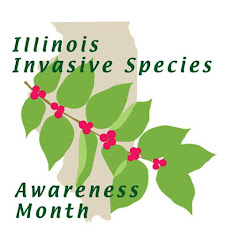CONTACTS
The Asian Carp Regional Coordinating Committee (ACRCC) announced today that no Asian carp were found during a three-day intensive search for the invasive species in Lake Calumet within the Chicago Area Waterway System (CAWS). The Level 1 response was triggered after three consecutive rounds of Environmental DNA (eDNA) sampling yielded positive results for silver carp DNA.
The ACCRC’s 2012 Monitoring and Rapid Response Plan calls for a Level 1 response to three consecutive rounds of positive eDNA results in one area. While Lake Calumet is regularly monitored for the presence of Asian carp, a Level 1 response added commercial fishing crews as well as additional electrofishing boats, larger sweeping nets called seines, and additional sampling gear to the area during an intensive four-day fishing period.
The response was conducted between July 11-13, 2012 by the U.S. Fish and Wildlife Service, U.S. Army Corps of Engineers, U.S. Geological Survey, Illinois Department of Natural Resources, and Illinois Natural History Survey- University of Illinois.
The crews strategically placed over six miles of various net types throughout the Lake Calumet area including the deployment of half-mile long seine nets on three separate occasions to sweep large portions of the area. Electrofishing boats fished more than 10 miles of shoreline areas to drive fish toward the nets. The response also deployed new net technologies developed specifically for Asian carp including, for the first time, pound nets to isolate Lake Calumet and prevent fish movement in and out. Additionally, other new gear being developed for Asian carp detection, including deep water gill nets and six-foot hoop nets, were deployed as part of this response action.
The new pound nets were equipped with boat-ways to allow boat passage during this extended deployment, and commercial and private vessel traffic was able to proceed with minimal interference from the monitoring activity. These nets will remain in place throughout the next week to gather further information on fish abundances and fish movements. These nets may prove to be valuable in other places throughout the Illinois River.
The three-day intensive search, which totaled more than 900 hours of individual work, yielded over 6,300 fish and more than 30 different species, with no bighead or silver carp seen or captured during the efforts.
Intensive sampling operations on the CAWS by the Illinois Department of Natural Resources, U.S. Fish and Wildlife Service and the U.S. Army Corps of Engineers first began on February 17, 2010 in an attempt to locate either silver or bighead Asian carp above the Electric Fish Barrier System. Since that time, hundreds of routine monitoring trips have produced only one Asian carp (bighead) above the barrier system which was captured in June of 2010 in Lake Calumet.
Lake Calumet, which sits approximately six miles south of Lake Michigan within the Calumet River, has been routinely sampled by ACRCC crews an average of four times per month looking for Asian carp.
The routine sampling efforts are an important and continued effort in the Asian Carp Control Strategy Framework, which includes both short and long term actions to stop the migration of Asian carp into the Great Lakes.
Commercial fishing operations will also continue to remove silver or bighead carp in downstate waters where the fish are known to be present. Since 2010, commercial fishermen contracted by the Illinois Department of Natural Resources have removed more than 1 million pounds of Asian carp from the Illinois River well downstream of Chicago.
Sampling and monitoring continues at fixed sampling stations throughout the Chicago Area Waterway System as detailed in the ACRCC’s 2012 Monitoring and Sampling plan to search for Asian carp. Actions are federally funded through the Great Lakes Restoration Initiative.
To view 2012 Strategic Framework or the 2012 Monitoring and Rapid Response plan please visit
www.asiancarp.us.












